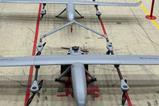Lockheed Martin will produce two specially-configured C-130J tactical transports for use by the US National Oceanic and Atmospheric Administration (NOAA).
“These new aircraft will be filled with state-of-the-art technology developed by NOAA and our partners, greatly enhancing our ability to gather critical data on hurricanes, atmospheric rivers and our changing climate,” says NOAA administrator Rick Spinrad.

To be operated from Lakeland, Florida from 2030, the new assets will replace aged Lockheed WP-3D Orions. Cirium fleets data records the government agency as operating two examples – registered N42RF and N43RF – with an average age of 49 years.
Lockheed will integrate the same multi-mode radar currently used by the WP-3Ds with the adapted Super Hercules. NOAA details additional equipment as to include “automated dropsonde launchers, high-speed internet connectivity, vertically scanning doppler radar, and instrument ports for a variety of research instruments for surface winds, waves and oceanographic sensing”.
Further operational capability will be enabled via the aircraft’s ability to “launch and control uncrewed aircraft systems that expand the reach of the aircraft into new and under-measured areas of the storm environment”, it says.
“Adding these highly capable C-130J aircraft to our fleet ensures NOAA can continue to provide the public, decision-makers and researchers with accurate, timely and life-saving information about extreme weather events,” says NOAA Marine and Aviation Operations director Rear Admiral Chad Cary.

Announced on 27 September, the two-unit order also includes options for an undisclosed number of additional aircraft.
NOAA in July 2024 also announced a $106 million order for a Gulfstream G550 business jet to be adapted for hurricane hunting duties.































